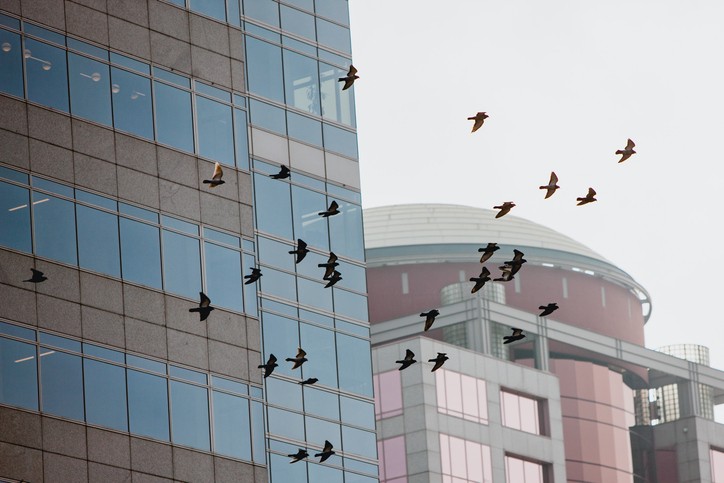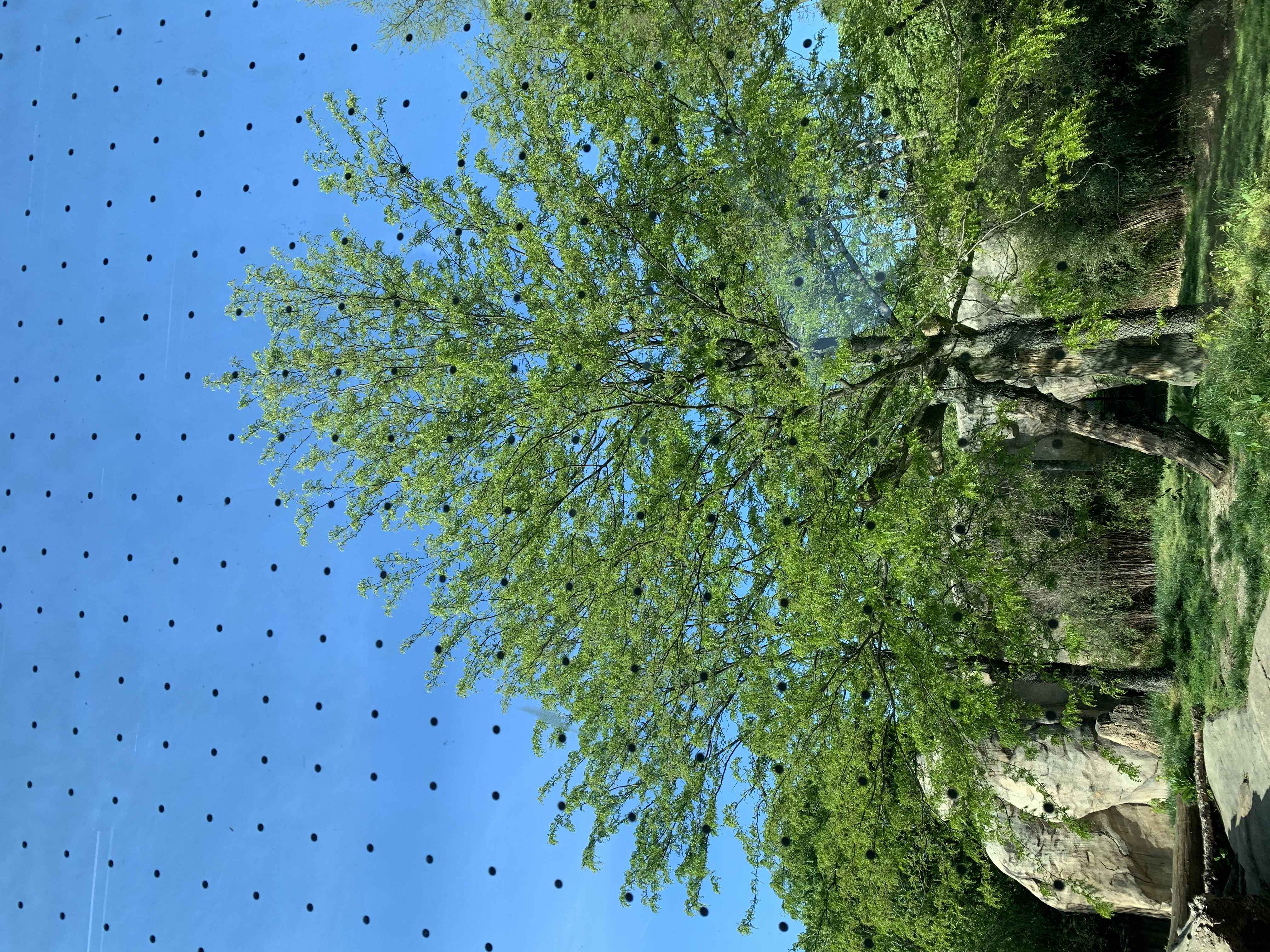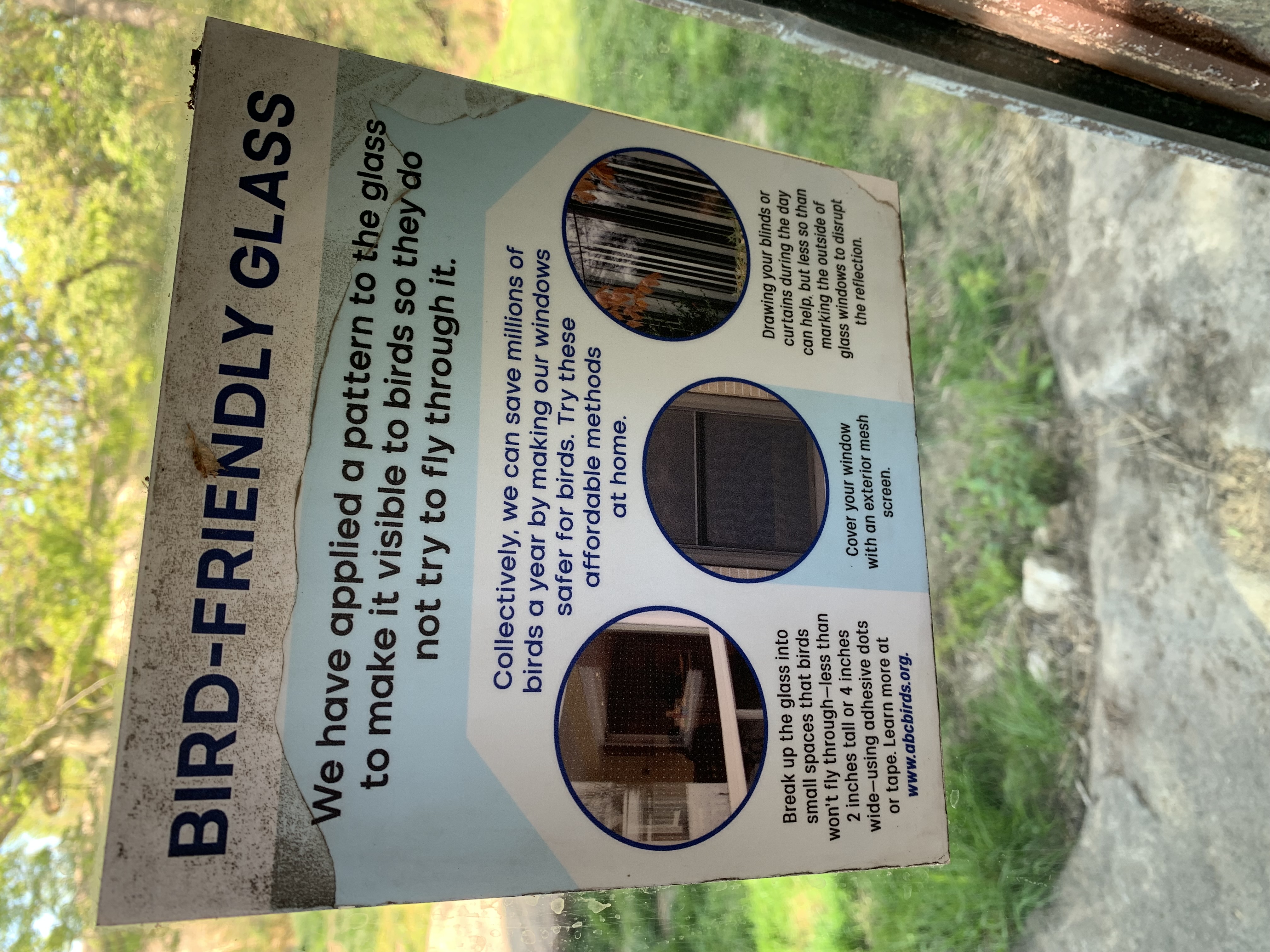
Preventable loss: A billion birds die each year from window strikes
The national problem is impacting songbird populations, UC biologist says
University of Cincinnati ornithologist Ron Canterbury displayed dozens of birds that died from striking glass windows in the city.
It’s a tiny fraction of those he and his students have collected in recent years for his long-term study on window-strike mortality. Here were magnolia warblers, American redstarts, white-throated sparrows, tiny hummingbirds and larger mourning doves and woodpeckers.
“It’s depressing,” he said.
Canterbury said these fatal collisions are having a significant effect on bird populations.
“Silent spring is coming,” Canterbury said, referencing the famous Rachel Carson 1962 book that inspired the environmental movement of the 1970s. “The urgency is now.”
As many as 1 billion birds die each year across the country after striking glass windows, according to the U.S. Fish and Wildlife Service. Some individual buildings are the site of thousands of bird mortalities each year. The losses are not incidental, Canterbury said.

UC biologist Ronald Canterbury examines some of the birds he and his students have collected during their surveys in Cincinnati. Warblers, sparrows, woodpeckers, hummingbirds and other birds die by the hundreds of millions each year after striking buildings in the United States, according to the U.S. Fish and Wildlife Service. Photo/Andrew Higley/UC Marketing + Brand
Canterbury has been studying bird mortality in Ohio for more than a decade and wild bird populations for 37 years. Even most dead birds are protected by federal law, so he needs a permit to collect them for his lab. He and his students walk a regular route to look for victims of window strikes in Cincinnati.
Some of the birds end up as mounted museum displays across the country. Others are used in the classroom to teach biology and ornithology. But they all end up getting recorded for Canterbury’s ongoing mortality study.
“Some birds like blue jays that are not long-distance migrants are better at avoiding windows,” Canterbury said. “But others are super-colliders — and they’re at risk of extinction.”
The decline of birds could affect human health, too.
Ronald Canterbury, Ornithologist in UC's College of Arts and Sciences
One such super-collider is the ovenbird, a spotted warbler with an orange crest that nests in mature woodlands.
“For every bird I find, you can multiply that many times over because you’re losing so many baby birds that year as well,” he said.
He worries that the ovenbird will follow the fate of golden-winged warblers, a species he has studied intensively in the Appalachians mountains. They, too, used to breed in Ohio. But golden-winged warblers have seen one of the biggest population declines of any bird in the past 50 years.
“They’re in bad shape compared to when I started studying them 30 years ago,” Canterbury said. “The last one I banded in Ohio as a breeding bird was 1998. They’re in real trouble.”

UC biologist Ronald Canterbury said some birds seem more susceptible to striking windows than others after seeing the reflection of tree branches in the glass. Photo/Andrew Higley/UC Marketing + Brand
Species on the brink
Canterbury said golden-winged warblers are considered an “umbrella” species, or one that through protection of its habitat protects other species. People love the colorful, little birds and want to protect them, which helps protect other imperiled species that rely on the same habitats.

UC biologist Ronald Canterbury uses mist nets to capture and band a golden-winged warbler in the Appalachian Mountains in this file photo. Canterbury said these warblers have sharply declined across their historic range. Photo/Ronald Canterbury
Some cities have launched lights-out campaigns to darken large office buildings at night so as to not interfere with migrating birds.
“Many of the birds I study, like sparrows, buntings, finches, warblers and thrushes, migrate at night,” Canterbury said.
The artificial light draws birds closer to cities where they are more likely to run afoul of windows and vehicle traffic, another big killer of birds.
“They’re often attracted to the lights of cities, which is creating a serious environmental issue,” he said.
Since some birds can fly as high as the world’s tallest mountains (the Rüppell’s griffon vulture has been seen flying at 37,000 feet), people might think that birds hit every floor of a building. But Canterbury said most collisions occur on the lowest three floors where birds see the reflections of landscaping or tree branches in the glass.
Glass connectors between buildings pose an especially big problem for birds, especially if there are trees or a landscaped courtyard on one side, he said.


The African lion exhibit at the Cincinnati Zoo & Botanical Garden features a grid of black dots on the glass with a sign explaining to the public how they benefit wildlife. Photos/Denis Conover
Simple ways to help
Federal regulators and nonprofit groups such as the National Audubon Society say there are lots of ways people can prevent deadly bird impacts on windows.
- Glass films featuring a visible pattern of squares or circles can help break up the illusion of open space.
- Patterned parachute cord can create a visual barrier for birds.
- Tempera or poster paint can provide a simple, temporary solution during spring or fall migration. It washes away with water and vinegar.
- Permanent solutions include custom-made glass featuring etched patterns or frost and ultraviolet patterned glass that is invisible to people but can be seen by birds.
“Basically, anything that disrupts the reflection of trees in the windows will work,” he said.
And for aggressive resident birds that peck their reflection, there is a similar easy solution. Canterbury said people can cover that window until the bird begins to nest and loses its aggressive disposition.
Canterbury said to help birds is to help ourselves. They help rejuvenate forests by spreading seeds.
“Birds eat millions of mosquitoes each year, so they help prevent the spread of mosquito-borne illness,” he said. “The decline of birds could affect human health, too.
“As they decline, it’s spelling big trouble for the health of ecosystems.”
Featured image at top: Wildlife regulators estimate that as many as 1 billion birds die each year after striking windows in the United States. UC Professor Ronald Canterbury is trying to raise public awareness about the problem in Cincinnati. Photo/Tim Newman/Unsplash

UC ornithologist Ronald Canterbury has been studying wild birds for 37 years. Photo/Andrew Higley/UC Marketing + Brand
Innovation Lives Here
The University of Cincinnati is leading public urban universities into a new era of innovation. Our faculty, staff and students are saving lives, changing outcomes and bending the future in our city's direction. Next Lives Here.
Related Stories
History Department Lecture
January 9, 2002
Lecture by Allan W. Winkler, Miami University, Oxford on "Urban America in World War II: Cincinnati as an example" at the Cincinnati Museum Center at 7:30pm.
UC Research Ranking Climbs
January 10, 2002
The University of Cincinnati moved up in two different national rankings established by the National Science Foundation (NSF) to compare college and university research efforts.
History Department Lecture
January 17, 2002
Lecture by Leslie Adelson, Cornell University, will deliver a Taft lecture titled "Back to the Future and Beyond 'Two Worlds':Turkish Lines of Thought in Contemporary German Literature and Memory Work" at 3:00pm in the Max Kade German Cultural Center in Old Chemistry.
New Appointments in McMicken Administration
January 21, 2002
The college is very pleased to announce two new appointments.
Sign Up for the Discovering A&S Elective
January 24, 2002
Parent's Asking, "What does someone do with THAT major?" Don't know all your options? Sign up for a 2 credit hour elective where you can meet A&S faculty, emeriti faculty, as well as, alumni.
Three of Four UC Fulbrights Scholars from McMicken
January 28, 2002
Tainted water supplies in Bangladesh, international security and missile defense, transformations in Mexico and greater understanding of India - this varied list sums up the work of four Fulbright Scholars at the University of Cincinnati who are concentrating on real-life issues involving our neighbors around the world.
Prominent Line-Up Examines Race in 2002 Ropes Series
January 31, 2002
The issue of race will receive one of the most intensive examinations undertaken in Cincinnati since the April riots when the University of Cincinnati Department of English launches its Ropes series in January and February 2002.
Nominate a Distinguished Alumni
January 31, 2002
The Purpose of the Distinguished Alumni Awards is to recognize graduates of the McMicken College of Arts and Sciences for outstanding achievements.
UC Physicists Play Important Role in Experiments That Provided New Understanding of Neutrinos
January 31, 2002
Three physicists at the University of Cincinnati played a key role in recent experiments which provided a surprising new understanding of a tiny subatomic particle known as the neutrino.
Angelene Jamison-Hall: Publishing Award
February 13, 2002
An unpublished novel by Angelene Jamison-Hall won first place in the new writing contest sponsored by River View Publishing in Riverside, Iowa.
